Christopher Hector asks – what makes a great freestyle?
An expert panel, with four of the great exponents of Freestyle, discussing what makes a great Freestyle…
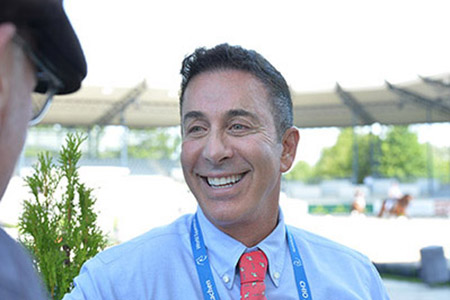
Robert Dover was one of the pioneers of freestyle, and along with his friend and mentor, Gabriela Grillo, was instrumental in the acceptance of this radical new approach to what had been the very serious business of dressage…
I asked him: Can we talk about what makes a really great freestyle?
“This is what I have always felt about a freestyle: the first thing is that when the rider is choosing music, they should pick music that makes the hair on their arms stand up when they listen to it. It should be just everything to them because it is such a personal thing when you are riding, and you are going to emote while you are on a horse, you have to love the music and be inspired by it. That’s number one as far as the choice of music.
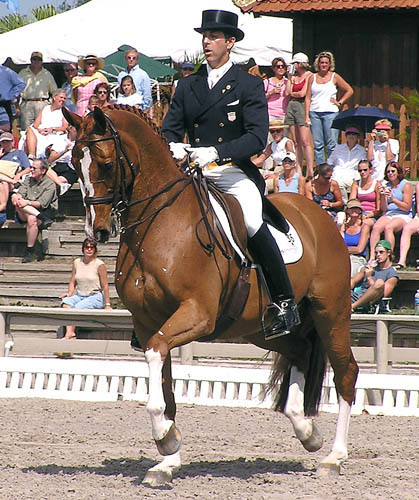
Robert and one of his freestyle stars, Kennedy
“Then, in today’s world, at the international level for Grand Prix, it is now a formula and once they started using the platform as it is now, where riders have to put forward their freestyle, like skaters have to do, once they started using that method then it is very easy to know if the freestyle choreography that you use has the degree of difficulty to allow you to get the highest amount of points.”
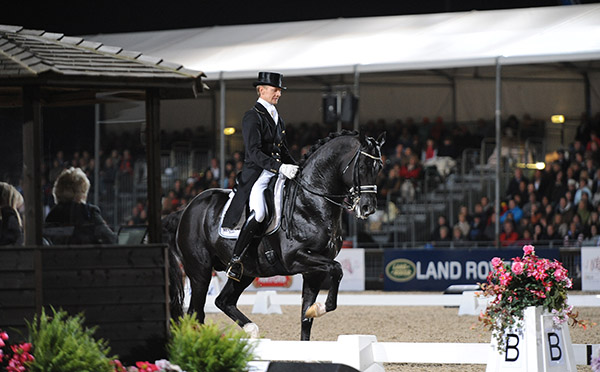
Totilas and Edward Gal – the movements were designed to get a 96%
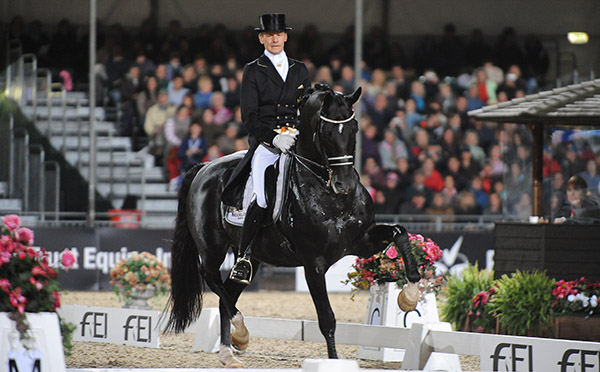
“If your choreography does not have the ability to allow you to get 96% you are not going to have any competitive edge. I’ll give you a perfect example of how easy it is to know when that formula works, when Totilas was competing at his very best in the freestyle, his choreography was able to achieve 96%.
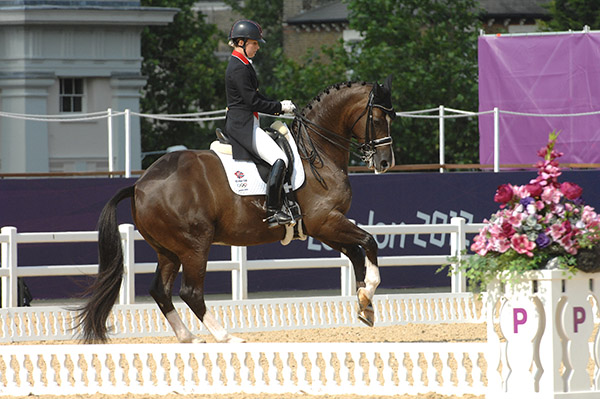
When Charlotte Dujardin created her freestyle, she undoubtedly looked at the choreography of Totilas, and tweaked it to be slightly different, but having the same kinds of transitions, the same kinds of movements, stitched together so that the degree of difficulty would be at that same level and if you watch the two horses going on video in their best freestyles, you are going to see there is not that big a difference in what the choreography looks like.”
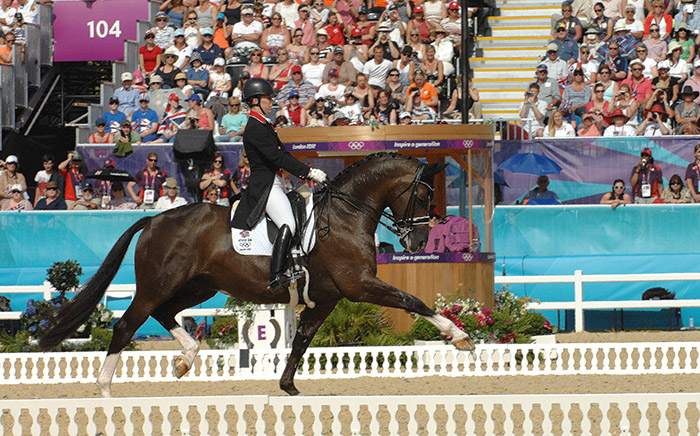
Charlotte and Valegro
“Likewise, when I helped Laura Graves do her choreography, we looked at the best in the world – which had been Totilas, and was then Charlotte Dujardin and Isabell Werth. You look at all of those, and then you say, okay, I need to include everything they do, then tweak it slightly, naturally change the music so you make it so that you just love it.
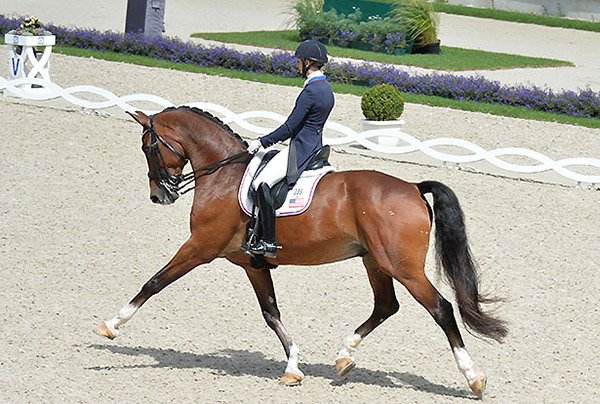
Laura and Verdades…
And the final element when you are competing it, is that you want to take the judges for a six-minute fantasy ride into your world, or into your story that you are putting out there. You are trying to invoke an aesthetic ecstasy in the people who are watching – and also to lay down a technically perfect ride, where the points just keep racking up for both the technique and the expression. That’s what it comes down to.”
story continues after the advertisement
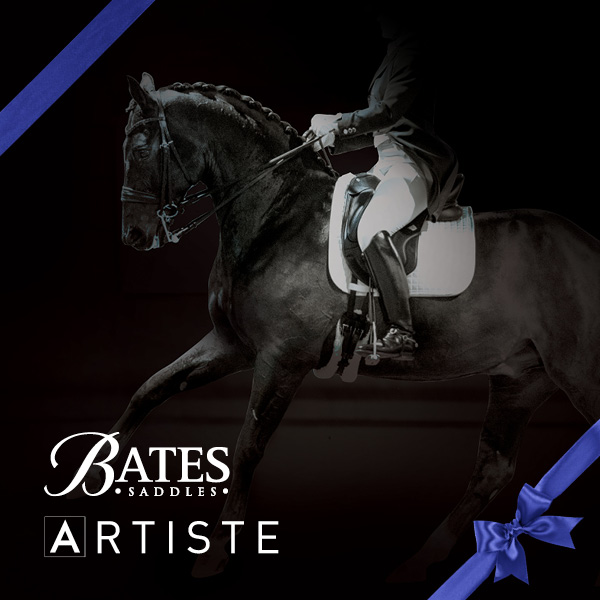
Looking back, what are the freestyles that stick in your mind?
“You know me well enough to know that I can really look back. I can look back to the time when if you asked the German riders, like Reiner Klimke, they’d say, oh god, we hate the idea of freestyle, it is going to make it too circusy and I was thinking, it’s what is going to save the sport. I can remember my own 1987 freestyle, that was basically a new thing to Europe. From the time that I started doing it in April to the time I was doing it at Aachen and Rotterdam, those shows where I won, by that time the judges knew it, and they thought that they would stand up before I even finished, because they wanted to be part of the act. It was a life-changing thing for me, and the beginning of what I think was a major change in the way people looked at freestyle…”
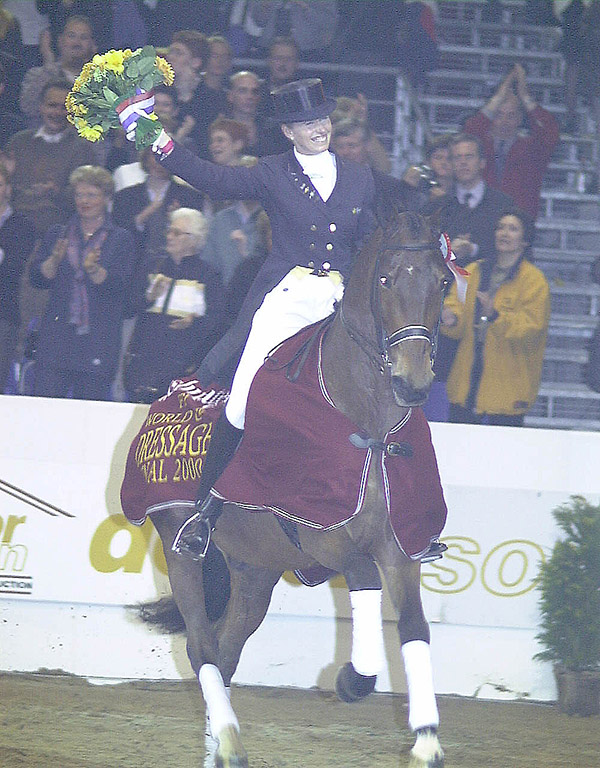
Anky and Bonfire winning at Den Bosch. The Kür was in the evening and in the lead up to the competition, ‘Song Sung Blue’ was played over the sound system for several hours..
“From there, looking back Anky’s Song Sung Blue was a tremendous freestyle because people were singing along with it, it was outstanding. And again, what changed the landscape of freestyles, was the timing of the foot falls. They were not something that was close to the music, from that point on, it was the job of the choreography, and the person who made the music, to take videos of the horse, and be there while the horse was performing the choreography and then to overlap the music perfectly, so that the rider could just do their test and wouldn’t have to be chasing forward the music, or slowing that down, they knew exactly how many steps they were going to do of piaffe, and as long they stayed to the exact number of steps in each thing they were supposed to do, the exact number of flying changes, that music was perfectly over-lapped to that horse and rider’s choreography. As the animal became stronger, maybe more scopey and could be ridden a bit bigger over the ground, the person who did the music, would just tweak it again, over-lapped as the animal evolved and the test became that slightly different tempo, slightly more bold in certain places, the music maker and choreographer just tweaks it again. That’s how progressive the entire thing has been since 1987.”
Do you think it’s nicer when it is real music, not just music that has been composed to that freestyle. Song Sung Blue was a great song before Anky turned it into a great freestyle… Now we get freestyles where they film the horse and make up some sounds to go with that, it’s not music that lives in itself?
“I think that both work. For instance, I had one done years ago by the London Philharmonic, they created music for me, and it was wonderful. Many riders, particularly the Swedes, have had music composed for their rides, and I think that can work beautifully. I also think in a sport where you have judges who may be of an age that they would find more of an emotional attachment to a song that they really knew, and that’s why Song Sung Blue was so overwhelmingly popular because everybody knew it and they were tapping their feet and snapping their fingers, they were dancing while they were sitting there to it. Songs like that can have a more immediate effect in getting the people behind it. Having said that, when I did my music, it was music to strip by, it was music for Breakfast at Tiffany’s. Even though most of the people would not have known the music itself, by the time I’d done it a couple of times, they were enjoying it, and being a part of it. It just depends on how beautifully the music is done, that you get that kind of a response.”
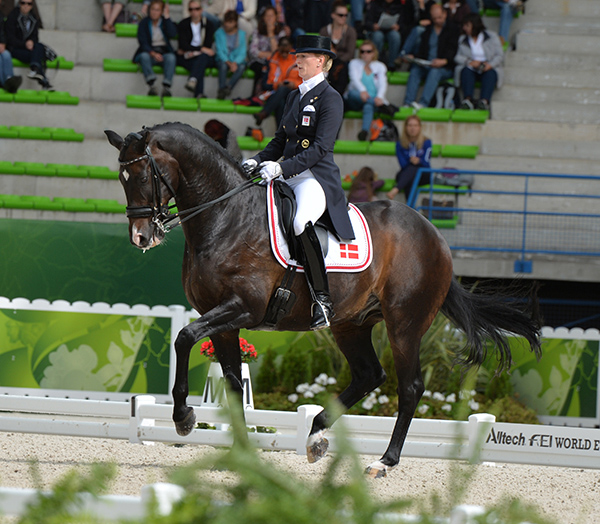
Nathalie and Digby
Next question to Princess Nathalie, who was something of a freestyle specialist with her wonderful partner, Digby, who danced to the music of West Side Story…
What makes a great freestyle?
“It has to fit the horse, and it can’t be pop music in my opinion. The whole freestyle has to fit together, it can’t be heavy music for a light horse, or a heavy horse with too light music also doesn’t work.”
The floor plan has to be complex enough to keep the marks coming, but not so complex it confuses…
“Exactly, in my eyes, that’s my opinion – and then you have to make the floor plan according to the horse’s age. If you have a young horse it’s not worth going to a ten degrees of difficulty. If the horse is still young and can’t figure it out, then it’s better to keep it a little easy, then you don’t have mistakes, but you can still get good marks and with that you get a high score. But if you make it too difficult for the horse, then the score will drop down…”
Has the trend to specially composed, computer driven music taken away much of the charm of freestyle?
“If it’s well done – no. If it’s not well done, yes, but if it really fits, and the music is a nice piece of music, and you really underline – like a pirouette, slow down the music – why not? If it still fits in and everything looks harmonious, why not? But again, it has to be done in a proper way.”
Thinking back, what are the memorable freestyles, the ones you still remember?
“Anky’s French chansons, the one she rode in Athens, where she sang on the sound track, that’s one I still really like. Another is Rusty’s Carmina Burana I think is really lovely. And I think Cathrine’s Les Miserables, I really love it.”
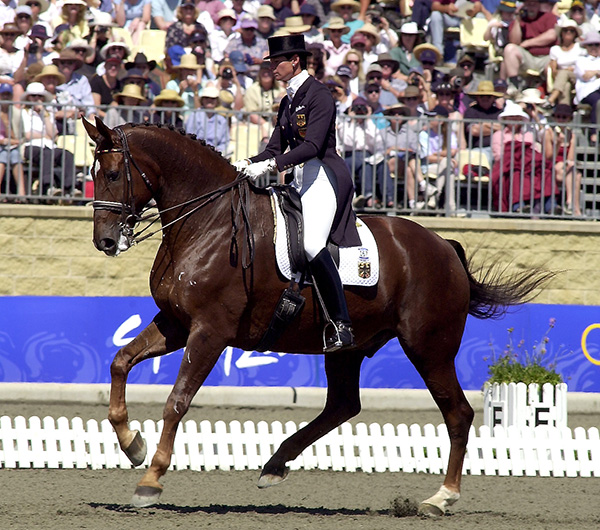
Rusty and Ulla
Your colleague Kyra did a couple of fancy Kürs…
“With Matador, absolutely, and the last one she had for Max, that was a really nice freestyle. Another I like is Imke’s (Bartels) with Sunrise.”
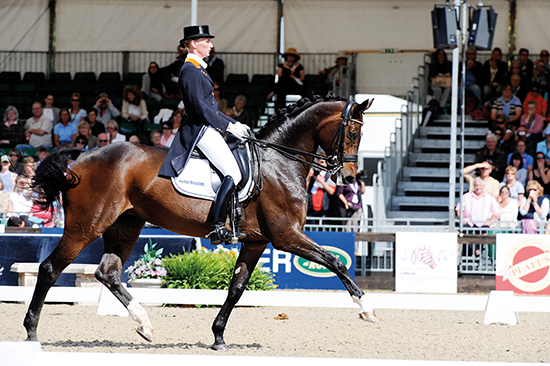
Imke and Sunrise
That was the one that was specially composed…
“With the piano player, that was really really lovely.”
When Dominique D’Esme arrived with her own little orchestra, did they make a mistake sending them away?
“No, it has to remain the same for everyone. Imagine if everyone brought their own orchestra, the organizers would have problems.”
But imagine, Ann-Kathrin could have reformed the Beatles, the Rothenbergers the Berlin Symphonic… Nathalie is with the joke, “Maybe we could have Bruce Springsteen coming along, okay it could have added something to it, would be interesting.”
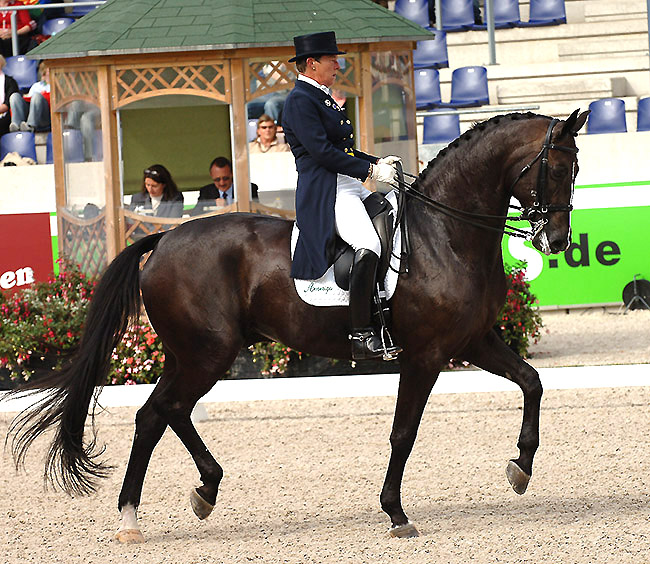
Kyra and Max
Now to Kyra Kyrklund, another who shone when the music was turned on…
What makes a great freestyle? How much of it is the horse, how much the choreography, how much the music?
“Good question. I think if you have a lot of mistakes technically, then you can’t win, so you do need to be without technical faults, then it’s like the better the horse and the better the rider. It’s a matter of understanding the music, so the spectators can really follow the music. The music creates a mood, and the music should suit your personality and especially the movement of the horse. Then if the horse is good enough, and you have the horse under control, so you actually can ride to the music. It shouldn’t be like background music, it should almost be that the music tells what the horse is going to do. So I would say, I think it’s a combination of all those things.”
“The technical part, is for me, the most important.”
Did you always prefer to use real music, not music that was made for the kür?
“One I really loved was Cabaret and that was the only one we did with an orchestra, because I didn’t want too much singing. Singing was allowed but it wasn’t used very much at that time. That’s why we did it in a studio with musicians, but one of the horse’s owners’ brothers, he owned a studio and he was into that sort of thing – I loved it. ”
“Otherwise I used a lot of ready music, not even arranging the music, just ready music and more did the freestyle according to the music. I didn’t have that big money to spend.”
Which are the freestyles that stick in your mind?
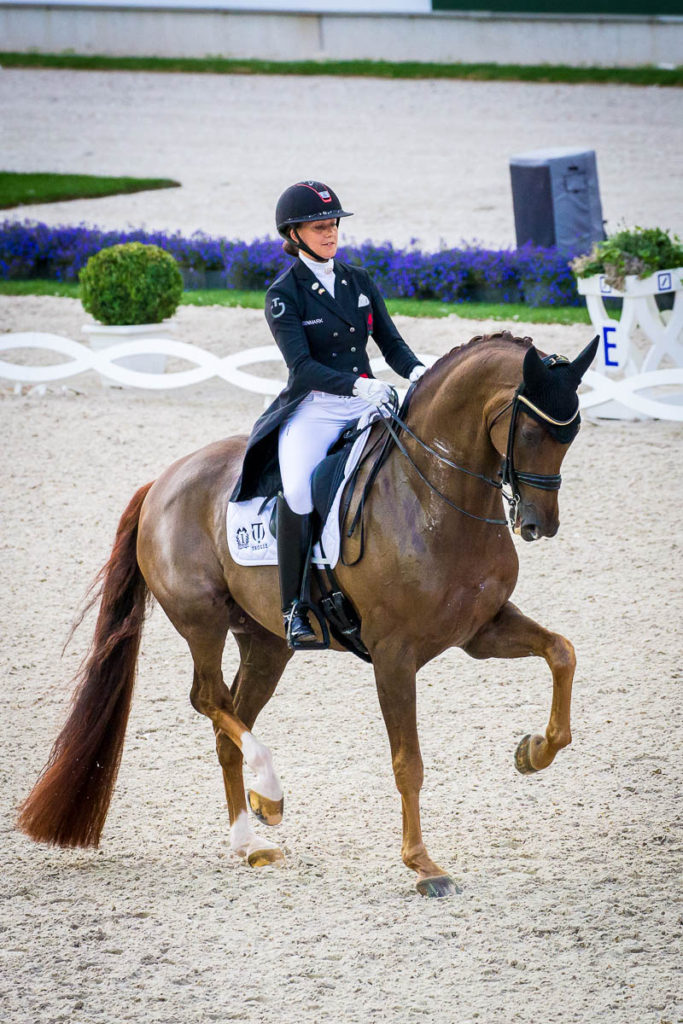
Cathrine and Bohemian
“Anky’s Edith Piaffe one was really fantastic. And there is a lot of Isabell’s music that has been really really good, and she is very good at riding to the music. I think Cathrine Dufour has a lot of good music…”
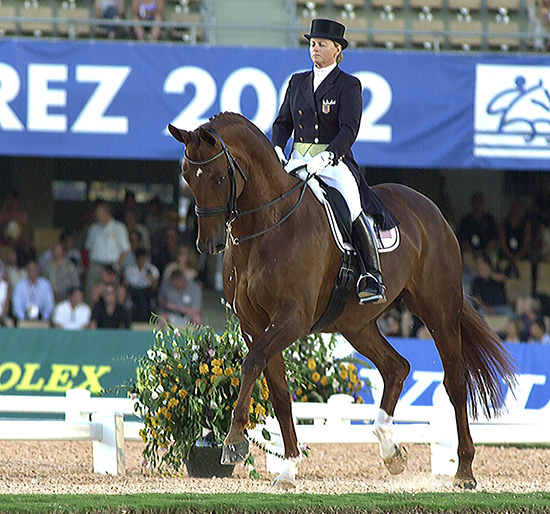
Debbie and Brentina
Over to another great Freestyle artist – Debbie McDonald…
I was thinking the other day about memorable freestyles, freestyles that stick in your memory. I remember this lovely chestnut mare coming up the centre line in the beautiful evening light of Jerez, to this wonderful oh so American, jazzy score, was that all Gershwin?
“My first one was Gershwin, yes.”
And that said something about where the rider came from, about the culture of that country… It was memorable, significant, music, it wasn’t stuff that a computer churned out to fit in with a video tape of which movements the horse did best… Think about Anky and Song Sung Blue, and Maria from Westside Story…
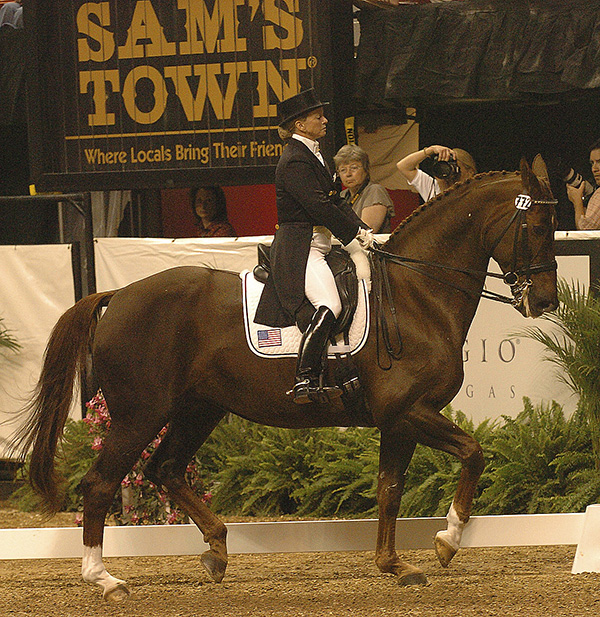
“But I think what Brentina is known for now is Aretha Franklin, the one we did in Vegas. That was done intentionally, I knew it was towards the end of our career, and I just wanted everybody to have fun. I wanted it to be something that people would remember, and hoped we could pull it off. But she must have sensed it too, because the mare gave it everything she had. Even though I wasn’t the winner by any sense of the game, but in my mind I was the winner because I had the whole audience involved and that was my goal to make sure they had something to remember.”
“That was at Vegas, and you must remember that my sponsor was Perry Thomas, of the Thomas Mack auditorium where they held the final, so it was a very special place in our mind.”
Do you think we’ve lost those memorable freestyles?
“I don’t think so, I really don’t think so…”
Which have been as memorable as the great ones…
“To be honest, with Covid, in the US I don’t think we’ve had a chance…”
But over the last five years or so, Valegro…
“Yes, Valegro.”
Okay it was very nice at the London Games with the British music, but I think what you remember of Valegro is the horse work rather than the music…
“It could be, I haven’t looked at it that way. Let me put it this way, Mr Thomas told me a long time ago, the freestyle that someone leaves humming, is the freestyle they’ll remember. I know that when my riders are doing a freestyle, that’s what they are trying to put in, something that people will be humming afterwards, that means it sticks in their minds. It’s just very different today – for me I enjoy a bit of vocal, I don’t enjoy all vocal, but again, it’s personal preference. I think any music anybody chooses, that is tasteful, that is appropriate.”
Do you prefer music that is music, not sounds generated by a computer…
“I don’t like the tech stuff, but I do think the people doing these freestyles now, they are so much more computer savvy, it’s done so well. Most of the freestyles at this level have been done in a studio. They are actually done with live orchestras. I love the freestyles, I think they are fun to watch and they are not easy to make because you are trying to do something a little bit different, and now with all these extra bonus points you can get here and there, there’s at lot that has to go into these freestyles. I really appreciate the effort the riders put in.”
Best of all live music?
“I had the experience with a live orchestra, when we did a fund raiser in Sun Valley for the orchestra. This is when I was doing the Gershwin, and they put together a special arrangement, it was a 98 piece orchestra. I remember the conductor saying, you mean I’m going to be a pit band for a horse! Then he was totally reversed when he saw what we were creating. That was a very special memorable moment in freestyles for me…”
ends
Breeding a dressage star this season in Australia? Go to www.ihb.com.au
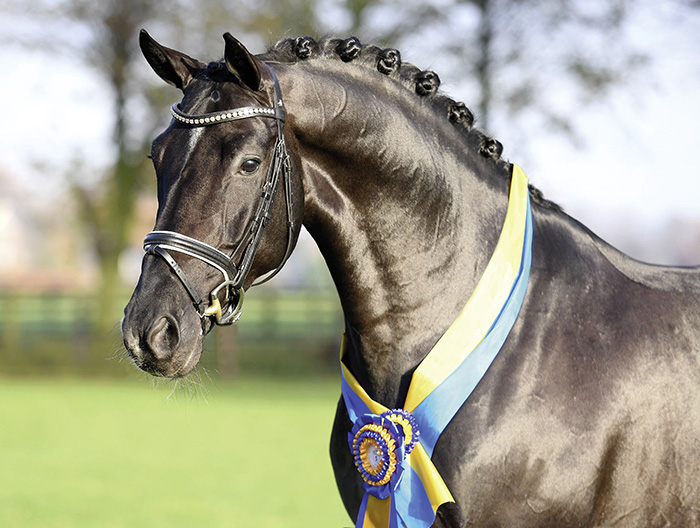
Stallions like the Totilas son, Total Hope, already a winner himself at FEI level!

Klaus Balkenhol on Goldstern at the WEG 2004 in Den Haag – what an amazing kür that was!